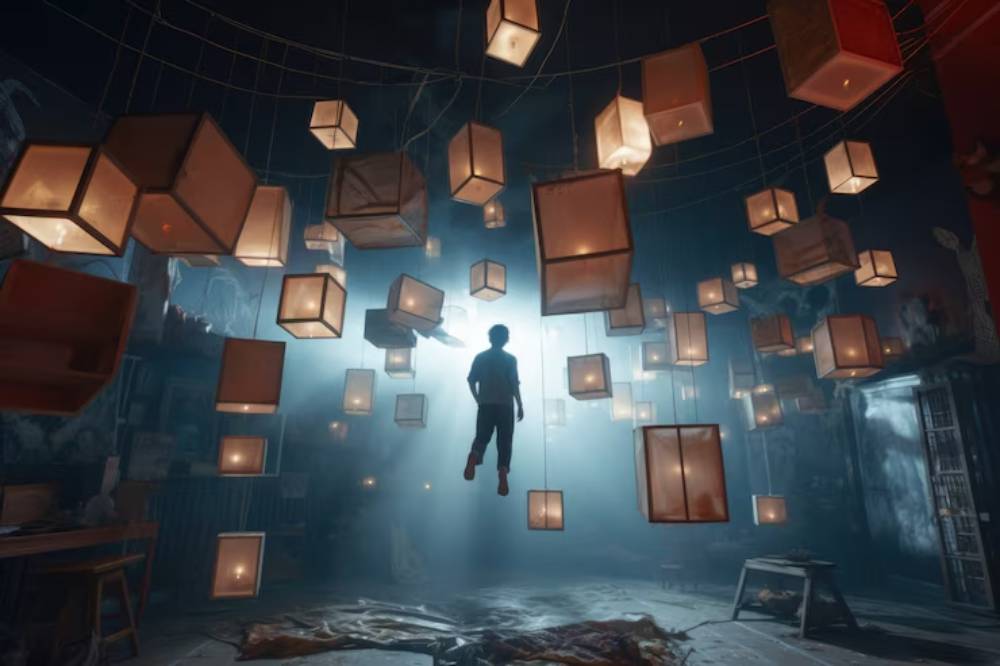
Behind the Magic: How Visual Effects Bring Stories to Life
In recent years, the film industry has changed a lot. This shift is mainly because of advanced visual effects (VFX). VFX innovations have changed storytelling. Now, filmmakers can build worlds and tell stories that used to be just ideas. Visual effects in film have transformed what’s possible. They bring fantastical creatures and epic space battles to life. This technology makes the impossible real and adds vibrant depth to stories.
Movie magic draws in audiences everywhere, taking them to worlds beyond their daily lives. The artistry and technology behind these amazing effects often stay out of sight. This blog explores the amazing world of visual effects. It looks at how they are made, their role in storytelling, and the magic they add to movies.
Key Benefits / Why It Matters
Visual effects are not merely technical embellishments. They are integral to the storytelling process, enhancing narrative depth and emotional impact. Here are some reasons why VFX is crucial in contemporary filmmaking:
Expanding Creative Horizons

Visual effects help filmmakers go beyond the limits of real sets and practical effects. Using advanced technology, directors can craft detailed worlds and complex scenes that would be hard to create otherwise. This expansion of creativity opens up new storytelling options. Filmmakers can explore themes and concepts in fresh, exciting ways.
Enhancing Storytelling
VFX is key to storytelling. It supports the story and makes the visuals more engaging. Visual effects in film enhance emotions, build tension, and engage viewers. They seamlessly blend CGI characters and create immersive environments. VFX adds layers of visual complexity. This can turn a simple story into a rich, multi-dimensional cinematic journey.
Real-Life Applications and Data-Backed Insights
The impact of visual effects extends beyond the realm of entertainment. VFX technology has recently been used in many areas. These include education, medicine, and architecture. VR and AR technologies use visual effects to create realistic training simulations. They also provide interactive learning experiences.
A report by Grand View Research shows that the global visual effects market was worth USD 11.33 billion in 2020. It is expected to grow at a rate of 11.7% each year from 2021 to 2028. This growth shows that more industries want VFX. It highlights how important VFX is, not just for films.
Additional Expert Tips & Common Mistakes to Avoid
While visual effects offer immense creative potential, they also present unique challenges. Here are some expert tips and common mistakes to avoid when working with VFX:
Best Practices
- Plan Thoroughly: Successful VFX integration starts with meticulous planning. Filmmakers should team up with VFX artists early on. This way, the visual effects match the story and artistic vision.
- Prioritise Storytelling: Visual effects should serve the story, not overshadow it. Filmmakers should focus on using VFX to enhance the narrative rather than relying on it as a crutch for weak storytelling.
- Maintain Realism: Even in fantastical settings, maintaining a sense of realism is crucial. VFX artists must focus on details like lighting, shadows, and physics. This way, the effects blend well with live-action footage.
Common Mistakes
- Over-Reliance on VFX: One of the most common pitfalls is over-relying on visual effects at the expense of practical elements. Striking a balance between practical effects and CGI can lead to more convincing and impactful scenes.
- Ignoring Budget Constraints: VFX can be expensive, and filmmakers must be mindful of budget constraints. Smart resource allocation and prioritising key scenes can cut costs while keeping quality high.
- Neglecting Post-Production: Visual effects require significant post-production work. Filmmakers need to set aside enough time and resources. This helps make sure the final product meets the desired standards.
Advanced Insights / Expert Recommendations
To really appreciate visual effects, you need to know the complex processes and tech behind them. Here are some key tips and advice for new VFX artists and filmmakers:
Embrace Emerging Technologies
The visual effects industry is always changing. New technologies and techniques appear all the time. Keeping up with new tech, like real-time rendering and AI effects, helps filmmakers stay ahead. Embracing these innovations can create new creative options and make the VFX production process smoother.
Collaborate Across Disciplines
Successful VFX integration needs teamwork from different areas, like cinematography, animation, and sound design. Building a cohesive team with diverse expertise can lead to more innovative and polished results. Filmmakers should create a space where everyone can share and explore ideas.
Invest in Continuous Learning

The VFX industry is dynamic, and continuous learning is essential for staying relevant. Aspiring VFX artists should look for learning opportunities. They can attend industry conferences and join online communities. This helps them grow their knowledge and skills. Investing in professional development helps artists stay updated with industry trends. It also boosts their creative skills.
Closing Credits: The Lasting Impact of Visual Effects

Visual effects have changed modern filmmaking. They let us tell stories in new ways that we once thought were impossible. VFX artists push creativity and tech limits. They bring magic to the screen, captivate audiences, and enhance the cinematic experience.
Visual effects in films will keep evolving. This change comes from new technology and what audiences expect. Filmmakers and VFX artists must embrace these changes. Staying committed to innovation unlocks new storytelling possibilities.
For those inspired by the magic of visual effects, now is the time to delve deeper into this fascinating field. If you’re a filmmaker, a VFX artist, or just love films, knowing VFX details can boost your appreciation. It can also inspire you to create your own movie magic.
What are your thoughts on the impact of visual effects in film? Share your insights and join the conversation on how VFX continues to evolve and shape the future of storytelling.


